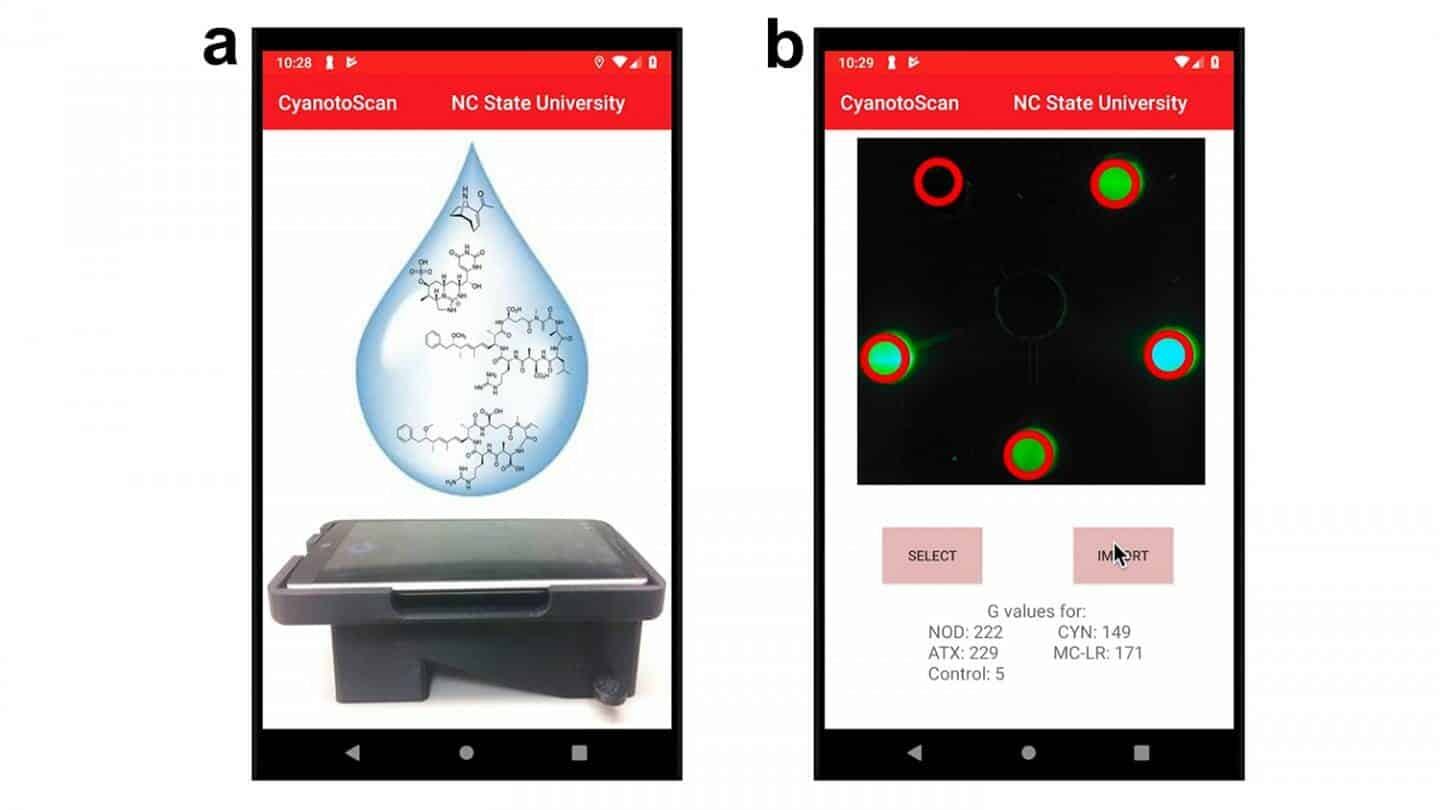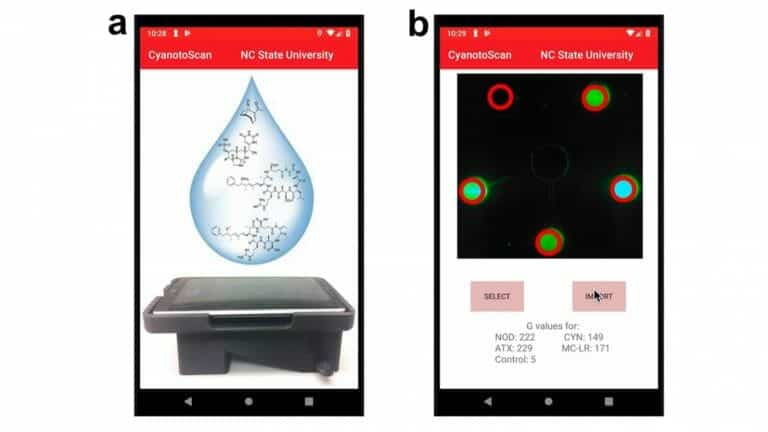IMAGE: North Carolina State University researchers have developed the first portable technology that can test for cyanotoxins in water. To test for cyanotoxins, users place a drop of water on a customized chip, then insert it into a reader device which connects to a smartphone. These images are screenshots of the smartphone app of the cyanotoxin sensor. Left: Welcome page. Right: Data analysis page. Credit: Qingshan Wei, NC State University
North Carolina State University researchers have developed the first portable technology that can test for cyanotoxins in water. The device can be used to detect four common types of cyanotoxins, including two for which the U.S. Environmental Protection Agency (EPA) recently finalized recreational water quality criteria.
Cyanotoxins are toxic substances produced by cyanobacteria. At high enough levels, cyanotoxins can cause health effects ranging from headache and vomiting to respiratory paralysis and death.
The new technology is capable of detecting four common types of cyanotoxins: anatoxin-a, cylindrospermopsin, nodularin and microcystin-LR. One reason the portable technology may be particularly useful is that EPA finalized water quality criteria this month for both microcystin-LR and cylindrospermopsin in recreational waters.
"Our technology is capable of detecting these toxins at the levels EPA laid out in its water quality criteria," says Qingshan Wei, an assistant professor of chemical and biomolecular engineering at NC State and corresponding author of a paper on the work.
"However, it’s important […]
Full article: Researchers create first portable tech for detecting cyanotoxins in water
More about cyanotoxins:
Salem water sees decrease in toxins, Wilsonville sees increase
Two Factors Increasing the Risk of Harmful Algal Blooms (HABS)



